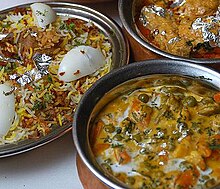
The Malayan Peninsula with it's
small
kingdoms and chiefdoms
had a long history of trade with merchants from
India. These traders have come and gone over the centuries bringing with
them Hindu influences, seen in the customs and rituals of local
rulers. However it was not until the 19th century, after the
Portuguese and Dutch colonists were eclipsed by the British, who took
control of the Malayan Peninsula that mass Indian migration took place.
Rubber seedlings from Brazil were found to grow successfully in this
equatorial land, and much needed manpower were recruited from British
East India for the burgeoning rubber industry. Road, waterworks as well
as railway infrastructure were also breaking new ground in this
equatorial jungle nation. 80% of Indians were Tamils from South India
employed in the rubber industry, while Sri Lankan Tamils and Malayalees
were employed in supervisory and clerical positions. Of the North
Indians, the Punjabis were employed in the
police force while the Gujaratis and Sindhis were in business, mainly
textiles. Despite the mass exodus of Indians returning to India after
Malaysia's independence from the British in 1957, many stayed on and
today Indians constitute the third largest ethnic group, making up 8% of
Malaysia's population of 27 million.
Indian food is now
not only very Malaysian; unique and new versions of Indian food, not found in India,
have ultimately been created. Indian cuisine can be divided into two mainstreams,
North Indian and South Indian cuisine.
Roti Canai
 A favourite for breakfast, Roti Canai is the ultimate in simplicity
and taste. It is basically a kind of pancake made by combining wheat
flour, oil, ghee, or butter, rolled up into a ball and then swung into
the air until it takes a flat, oval shape. It is then fried on a hot
iron plate and served with dhal, chicken or fish curry.
A favourite for breakfast, Roti Canai is the ultimate in simplicity
and taste. It is basically a kind of pancake made by combining wheat
flour, oil, ghee, or butter, rolled up into a ball and then swung into
the air until it takes a flat, oval shape. It is then fried on a hot
iron plate and served with dhal, chicken or fish curry.There are many variations on the same theme that include putting in eggs to make it ‘Roti Telur’, sardines to make it ‘Roti Sardin’, bananas to make it ‘Roti Pisang’ and so on.


Mutton Korma : Korma,
usually spelt
Kurma in
Malaysia, is a
comparatively
mild [not
hot]
curry. Usually
mutton [goat] or lamb
is slow cooked
in a medley
of spices and
coconut milk. Kurma is
popular as an
alternative
to hot or
fiery curries,
especially at
special
occasions
such as
weddings -
to please the palates of all guests especially those who
are not
accustomed to
hot foods.
This flavorful curry can be served with
plain steamed rice, biryani rice, nasi minyak [ghee rice]
or roti
[bread]. It is also delicious
with the
famous Malay
'lacy' crepes
called Roti Jala.

Tandoori Chicken: Indian Clay-oven Chicken - an all-time favorite, tandoori chicken is served 24 hr at 24 hr Mamak eateries [local Indian restaurants]. Great for those late-night munchies! Mildly-spiced spring chicken quarters are baked to tender succulence in a tandoor - a traditional Indian clay oven. A spicy mint sauce is usually served on the side with plain or garlic Naan bread.

Fish Head Curry: a fish head,
usually from large sized groupers,
cods, salmons or red snappers, is cooked in fish curry powder,
spices,
chilies,
tamarind and
coconut milk.
This weird and wonderful
dish has gained
popularity
especially
with fish
aficionados,
who know that
the sweetest
meat of the
fish is
from the head
and cheeks!
Indian Mee Goreng:
Indian
Fried Noodles
- fresh yellow
egg noodles [chow
mein],
dried squid
[that has
been
reconstituted],
potatoes,
fried tofu,
eggs and bean
sprouts are stir fried.
The addition
of certain
spices is
what gives this
fried noodle dish a distinctly
unique
Indian
flavor!

Mee Rebus: Indian
'Sweet
Potato Gravy'
Noodles -a rich
gravy made
out of sweet
potatoes, is
ladled
over
fresh yellow
egg noodles
[chow mein] and
bean sprouts.
It
is
garnished
with cooked squid,
prawn
fritters,
boiled egg and
fried
shallots. A squeeze of a fresh local lime called
limau kasturi
[kalamansi
lime]
- brings it
all together.
by: Ng Tzer Yen
by: Ng Tzer Yen
No comments:
Post a Comment